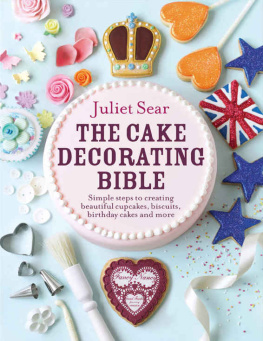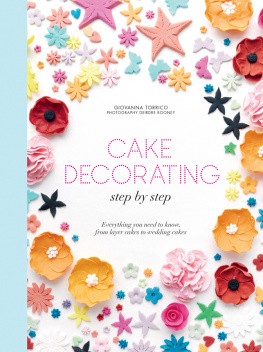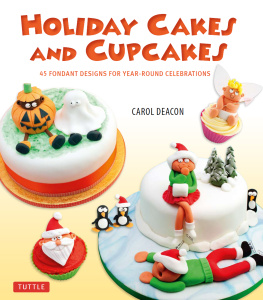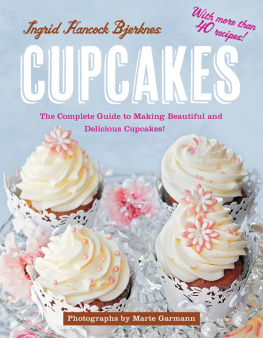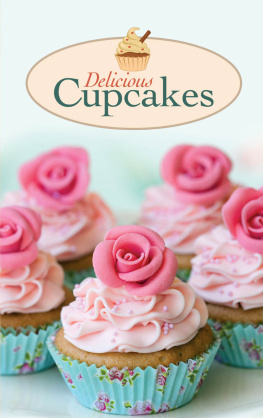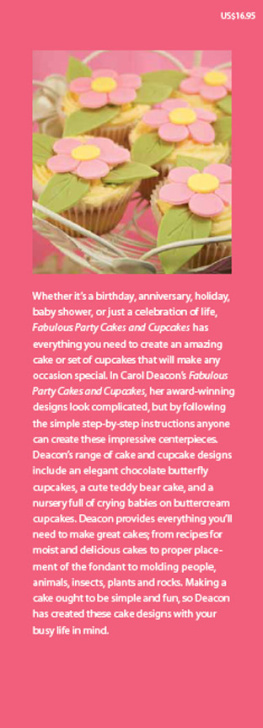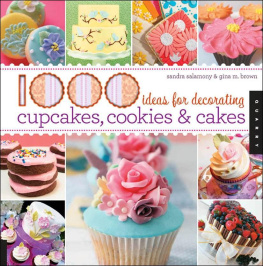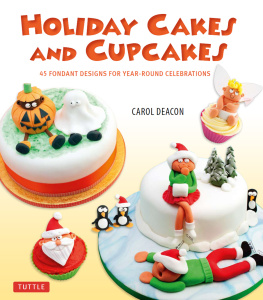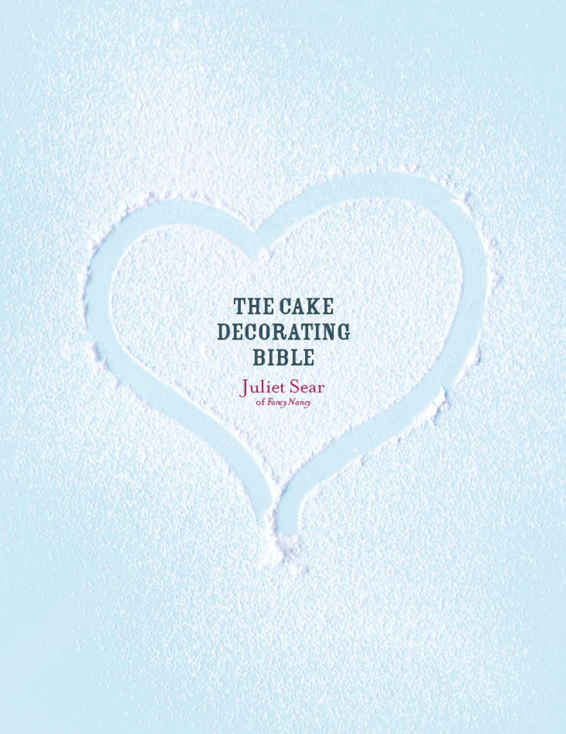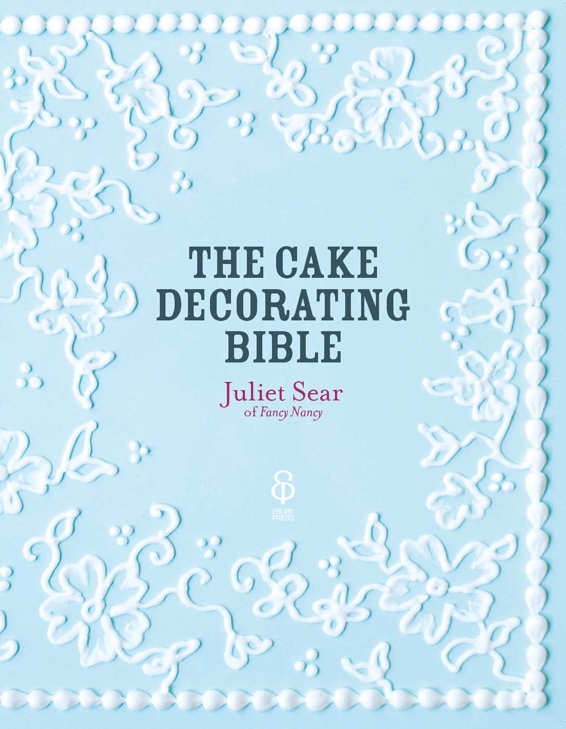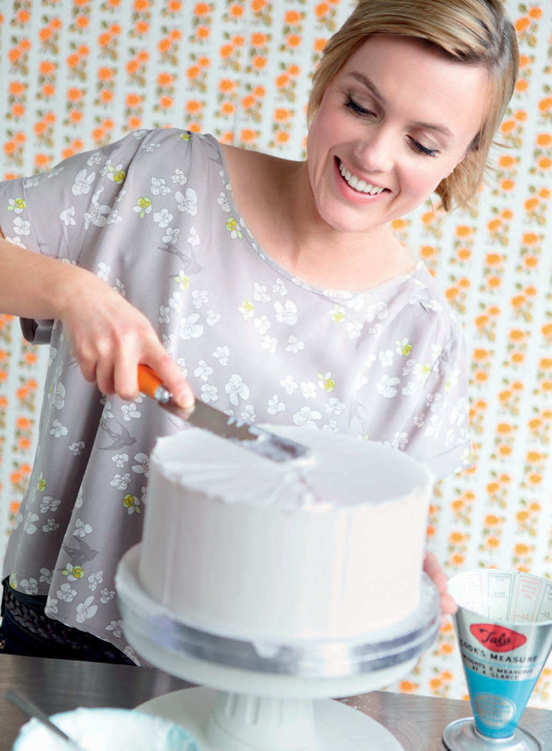CONTENTS
LIST OF RECIPES
ABOUT THE BOOK
Juliet Sear is cake-maker extraordinaire, baker to the stars and owner of the fabulously decadent Fancy Nancy bakery in Essex. Her breathtaking, show-stopping cakes and biscuits see celebrity and style magazines flocking to get a glimpse of her latest extravaganza. Now you can learn the secrets, tricks and insider tips to making and decorating your own stunning baked creations.
ABOUT THE AUTHOR
Formerly with the Little Venice Cake Company, Juliet Sear now runs Fancy Nancy (www.fancynancy.info), her own successful cake boutique in Leigh-on-Sea, Essex, selling celebration cakes, cupcakes, cake pops and cookies. She has been praised widely for her contemporary edge, stunning designs and the supreme taste of her cakes. Fancy Nancy supplies Harvey Nichols across the UK and Juliet runs classes at Leiths School of Food and Wine.
FOR SIMON, GEORGE, LYDIA AND RUBY
INTRODUCTION
I have always been interested in cooking and baking. When I met my husband I would cook up three-course meals with starters and puddings, partly, I think, to impress him, but mostly because I liked the feeling of achievement. Having a happy and adoring customer was also a good source of motivation.
My relationship with cakes, however, really started after I had my first child, over 13 years ago. Like many new mums, I was at home and had the urge to put on fairy-tale birthday parties, topped off with a great big, themed birthday cake: something that would impress the kids and probably the other mums as well. Teletubbies, Power Rangers, castles; whatever was in vogue at the time, I gave it a go.
I really enjoyed it and, before too long, admirers started to ask if I would bake and decorate cakes for them too. This turned into a little home business and within a few years I was baking weekly orders for a local caf. It gave me some cash, a focus beyond my kids (I had three under the age of three) and a sense of enjoyment. However, I felt that the quality of my work was okay for an amateur but, having not had any formal training beyond home economics at school, I had reached a ceiling.
I got a bee in my bonnet about it, and over the next few years, whilst balancing commitments with the kids, I followed a short course at the Cordon Bleu cookery school, and undertook some work experience before getting a part-time job at the Little Venice Cake Company in Marylebone, London, where I worked for about 18 months.
In 2006 I set up my cake-making business, Fancy Nancy, trading from home for the first couple of years before moving into a shop with a bakery and decorating facilities in April 2009. These days, I have a team of half a dozen people and hundreds of customers. I get regular calls from magazines and TV producers for innovative designs and have made cakes for the likes of Eamonn Holmes, Dizzee Rascal, Holly Willoughby, Sir Ian McKellen, Richard Madeley, Bryan Adams, Fearne Cotton, Bob and Pixie Geldof.
Its been a long journey and not always easy. But despite the stress of it all, I really do enjoy designing and making cakes. I love the creativity of it and the fulfilment I get at seeing someone filled with joy when they come to pick up their cake or see it at their venue for the first time.
This book catalogues what I have learnt on the journey and passes on the methods that my team and I use in the Fancy Nancy kitchen every day. It explains techniques and shares trade secrets and clever shortcuts on how to get a perfect finish, how to bake the perfect chocolate cake, how to match the right cupcake sponge to topping, how to pick out the right design and a whole lot more.
Above and beyond everything, this book is full of practical know-how on creating shop-quality cakes in your own home.
CAKE JARGON AND SUPPLIES
In the world of cake decorating there are words, phrases and supplies that you may be unfamiliar with. Here they are explained.
ACETATE PAPER
A translucent, plastic, flexible paper that is used for creating run-outs. Because it is clear, you can trace images through it. If you find this hard to get hold of, you can use plastic stationery document wallets in its place.
BAKING PARCHMENT
A thick, moisture-proof, greaseproof paper used to line baking tins and trays. It can also be used to make piping bags.
BLEEDING
When one colour of icing runs or spreads into another; lighter-coloured icings can get stained by stronger ones. This happens most commonly with combinations of light and dark, especially on run-outs, or cookies decorated with royal icing.
BLOOMING
This is when chocolate gets unattractive white patches on its surface. The bloom can be caused by the fat or the sugar; the chocolate is still fine to eat and will still taste the same, but is less appealing to the eye. This can occasionally happen on a ganache cake if you keep it for a while.
BRUSH EMBROIDERY
A decorating technique where a piped royal-icing outline is brushed inwards with a soft, damp brush to create an embroidered effect.
CRUST OR SKIN OVER
A term used to describe when an icing surface or royal-icing run-outs start to dry out and form a hard crust on the surface. This prevents one colour from staining another; in cake decorating you often have to wait for this to happen before moving on to the next step.
DUST COLOURS
These are non-toxic powders, available in many colours and shades. You can use them to decorate dried sugar decorations or they can be mixed with vodka or cocoa butter to create a paint that you can use for cake decorating. You can apply them with a dry brush to give your sugar decorations more depth and varied colours.
Next page
